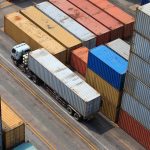The Australian Haulage Industry is a vital component of the country’s economy, facilitating the movement of goods and raw materials between various regions, cities, and towns. With a vast and diverse landscape spanning the continent, the industry plays a critical role in ensuring the smooth functioning of supply chains and supporting the growth of different sectors.
The industry comprises large and small transport companies, ranging from multinational logistics providers to owner-operators. The size and scale of the companies often depend on the type of freight being transported and the distance covered. For instance, long-haul transportation of heavy and bulky items, such as mining equipment, typically requires larger trucks and trailers, whereas urban deliveries of smaller consignments may involve smaller vehicles.
The haulage industry in Australia faces various challenges and opportunities, including regulatory compliance, technology adoption, and sustainability. One of the most significant regulatory challenges is the need for compliance with state and federal road transport laws and regulations. Compliance with these laws is necessary to ensure road safety, protect the environment and maintain the efficiency of the supply chain.
Technology adoption has the potential to transform the industry by improving operational efficiency and reducing costs. For instance, telematics systems and GPS tracking can help companies monitor vehicle movements and driver behaviour, enabling them to optimise routes and reduce fuel consumption. Similarly, using automated vehicles and drones can provide opportunities for safer and more efficient delivery of goods, particularly in remote and rural areas.
The Australian Haulage Industry has rapidly embraced new technologies to improve its operational efficiency and competitiveness. With advancements in digital technology, automation, and data analytics, the industry is transforming to meet the increasing demands of customers for faster, safer, and more cost-effective freight delivery.
One of the most significant technological advancements in the industry is the use of telematics systems and GPS tracking. These systems allow transport companies to monitor their vehicles in real-time, track driver behaviour and optimise routes. By using telematics systems, companies can reduce fuel consumption, lower operational costs, and enhance driver safety. Real-time tracking also allows for faster and more accurate delivery times, which increases customer satisfaction.
Another technology that is revolutionising the industry is automation. Automation technology such as autonomous vehicles, robotics, and drones are being used to reduce human error, enhance safety, and improve productivity. In the haulage industry, automation technology has the potential to reduce driver fatigue, improve load security, and reduce labour costs.
Furthermore, data analytics is playing an increasingly important role in the industry. Transport companies can gain valuable insights into their operations by analysing data from vehicles, sensors, and other sources. These insights can help companies identify inefficiencies, optimise routes, and reduce operational costs. By using data analytics, transport companies can also improve their forecasting capabilities, which enables them to make more informed decisions about freight movements.
The adoption of digital technologies has also improved the industry’s overall sustainability. For example, electronic invoicing, digital document management, and online shipment tracking have reduced the industry’s reliance on paper-based processes. Transport companies reduce their carbon footprint, improve their environmental sustainability, and contribute to the fight against climate change by reducing paper usage.
The Australian Haulage Industry is rapidly embracing new technologies to improve its operational efficiency, customer satisfaction, and sustainability. The use of telematics systems, GPS tracking, automation, and data analytics is transforming the industry and creating new opportunities for growth and innovation. By embracing these technologies, the industry can meet customers’ evolving demands while improving safety, reducing operational costs, and contributing to a more sustainable future.


